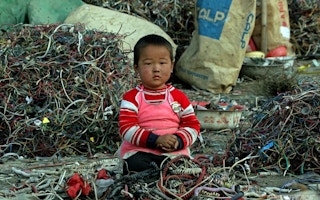Electronics conglomerate Panasonic Asia Pacific launched on Friday a new programme for recycling home appliances and electronic waste in Singapore.
Called the Heartland E-waste Recycling Programme, the CSR initiative is a pilot project running from July to December 2013 at Marine Parade and Mountbatten, or Singapore’s south east district.
Panasonic has partnered with the South East Community Development Council (CDC), National Environment Agency (NEA), electrical and electronics retailer Best Denki, e-waste recycler Cimelia and public waste collector SembWaste to provide an integrated, convenient recycling platform covering different avenues, from the community to retailer level.
Paul Wong, managing director of the Panasonic Singapore, explained that consumers nowadays rely heavily on their electronic devices. Because of this, Panasonic saw the need to manage discarded gadgets or “anything with an electric cord”.
The Heartland E-waste project accepts the recycling of refrigerators, TVs, and other home appliances, besides personal entertainment gadgets.
Wong said, “The recycling of home appliances, which are generally bulky in nature, has been challenging for consumers. This may have led to improper waste treatment which would then have negative repercussions on the environment.”
Koh Kim Hock, NEA director-general for the Environmental Protection Division, added: “E-waste originates from many different types of products … and each of these products is assembled from many parts and components. This makes the process of recycling e-waste a complex and intricate task. If the recycling process is not conducted properly, recyclable parts might simply be discarded or it could result in the pollution of the environment.”
The six-month trial programme is Panasonic’s solution to this harmful waste. This is the electronics firm’s effort to raise awareness on the nature of electronic waste, and more importantly to encourage recycling through a hassle-free collection system.
Collection points are currently in place at ten resident committee centres in Marine Parade and Mountbatten. Residents can dispose their portable e-waste in these locations, as well as general waste like paper, plastic bottles and aluminium cans.
There will be monthly collection drives at the centres starting on July 14. Succeeding collections will be held every first Sunday of the month, from nine in the morning to twelve noon.
Aside from portable e-waste, bulky e-waste and large home appliances can be disposed through the Marine Parade Town Council Bulky Items Removal Service, which can collect up to three bulky items per household per month for free. Cimelia will then collect the e-waste gathered by the town council and recycle it.
Another alternative is the retailer level, where consumers can recycle their portable e-waste at collection bins found at the Best Denki outlet at Parkway Parade mall. Bulky e-waste, on the other hand, can be collected by the Best Denki Removal Service upon purchase and delivery of a new appliance.
Select schools in the area are also participating in the programme. Students of Chung Cheng High School, Dunman High School, Tanjong Katong Secondary School, Haig Girls School and CHIJ Katong Convent can dispose their e-waste at collection bins placed in their respective schools.
Cimelia will likewise gather the e-waste from these other collection points and segregate it in order to retrieve raw materials like precious metals and plastics, which will then be recycled for new products. As for the general waste collected, this will be turned over to SembWaste for recycling.
Aside from promoting recycling and making it easier, Panasonic will also be conducting awareness talks in different schools and organising field trips to their factory and Cimelia’s recycling plant to let students learn more about the concept of recycling and green manufacturing.
In addition, Panasonic plans to donate 5,000 energy-efficient light bulbs to poor families in the area. The number of light bulbs to be given will depend on the amount of recyclables collected. For example, one energy-efficient light bulb will be given in exchange for one small household appliance.
If the programme goes well, Panasonic aims to expand the Heartland E-waste project nationwide. The goal is to have the programme replicated in each CDC district.
It is a move welcomed by Koh. He said, “There are currently avenues to recycle e-waste, such as through voluntary take-back schemes managed by IT [or information technology] vendors and through second-hand dealers. However, these schemes are restricted to only some products.”

















